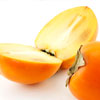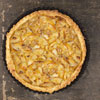Place chopped eggplant in a colander. Sprinkle with salt and let the moisture drain for 1 hour. Heat a heavy, stainless steel skillet over medium-high heat. Add the extra virgin olive oil and swirl to coat the bottom of the pan. Sauté the onion, stirring often, until golden, about 8 minutes. Add celery and garlic and sauté another 3 minutes. Squeeze the moisture from the eggplant with your hands. Add to the vegetables to the skillet and sauté for about 10 minutes, stirring often, until the eggplant is tender. Remove from heat and stir in the tomatoes, capers, anchovy paste, vinegar and salt and pepper until well combined. Let come to room temperature and stir in the chives. Serve at room temperature or chilled. Makes about 2 cups.



